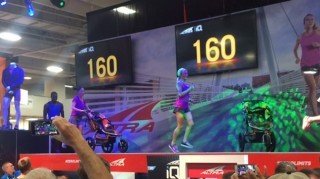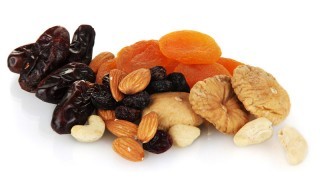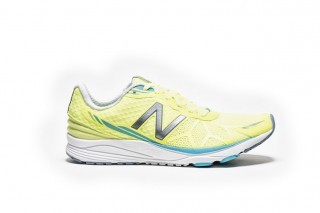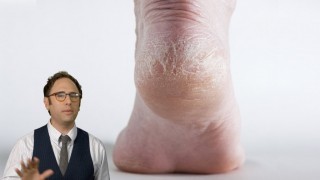Ryan Hall's Blog, page 371
August 6, 2015
Out There: The Madness of Outdoor Retailer

At the Altra Running booth, a 30-foot treadmill with flashy lights and running models is a source of entertainment. Photo: Brian Metzler
I’ve long thought it’d be fun to open my own running shop one day. In addition to spending my days slinging shoes and pointing people to the best trails in the area, I’d have first dibs on any and all new products before they even hit the market. In the romantic dream I conjured up as a proprietor, I’d carefully curate the goods I would stock on my shelves, personally testing each and every product to make sure it would meet my exacting standards.
Which is why, when my handlers at Competitor sent me to Outdoor Retailer this week in Salt Lake City, I got more than a little excited to indulge that fantasy. I thought I’d finally get to observe what makes these small business owners tick. Of the millions of products to choose from every year, how does a person narrow it down to what’s deserving of the limited space on their sales floor?
At Outdoor Retailer, I got my answer: With beer. Lots of beer.
Now I really want to own a running shop.
As the world’s largest showcase of products for the active lifestyle, Outdoor Retailer is where 20,000-plus real-life business owners (and one running magazine columnist) view next year’s shoes, nutrition, gear and other active lifestyle products vying for a spot on the rack of your local running store.
With hundreds of brands crammed in one tiny space, everyone’s got a gimmick to catch your attention—one running shoe company erected a two-story, 30-foot treadmill constantly filled with models running; another built a vending machine dispensing GPS watches. There are light shows and smoke machines and tiny food samples served up on tiny silver spoons. It’s exactly like Vegas, but with moisture-wicking fabric.
And, of course, the ultimate gimmick—at both Vegas and at Outdoor Retailer—is alcohol. Every booth has bottles, kegs or heavy pours of cabernet. I suspect this is a strategic move by the exhibitors, because there’s no easier way to seal a business deal than by getting your customer tipsy. By 5 p.m., most transactions looked like closing time at a dive bar: You’re cute. I think I’ll take you home with me. HEY, CAN I GET ANOTHER IPA OVER HERE BEFORE I GO?
The exhibitors imbibe as well, and their loose lips are entertaining. At one booth, a product was advertised as containing “RFL Technology.” Having no awareness of such a feature, I inquired about its meaning.
“You really wanna know?” The product representative flashed a sly smirk. I nodded. “We were kicking around ideas for advertising one night when someone said, man, this is really f***ing light. And there you have it: R…F…L.”
When he put his hand up for a high-five, I couldn’t help but laugh.
The booze continues to flow freely at private parties hosted by brands after the show closes each evening, and that’s when things get really crazy. In addition to several spontaneous beer miles in the streets of Salt Lake City last night, I saw someone drinking lager out of a trail shoe, “Das Boot” style. I was also cornered by a guy who insisted I arm-wrestle him for a free trucker cap (alas, my head remains unadorned, and I have begun a strict bench-press regimen in preparation for next year).
So there you have it: What shows up for sale in your local running store is very possibly the decision of a few too many craft beers at Outdoor Retailer. Given the “careful curating” done under the influence, it’s truly a wonder our shops aren’t stocking neon thongs and moon boots for our fall marathons.
****
About The Author:
Susan Lacke does 5Ks, Ironman Triathlons and everything in between to justify her love for cupcakes (yes, she eats that many). Susan lives and trains in Salt Lake City, Utah with three animals: A labrador, a cattle dog, and a freakishly tall triathlete husband. She claims to be of sound mind, though this has yet to be substantiated by a medical expert. Follow her on Twitter: @SusanLacke
The post Out There: The Madness of Outdoor Retailer appeared first on Competitor.com.
August 5, 2015
Workout of the Week: Pre’s 30-40 Workout

You can adapt this workout to suit your own speed and address your specific training needs. Photo: Shutterstock.com
Forty years after his death, the late Steve Prefontaine continues to inspire legions of American runners who aim to emulate his brash competitiveness, trademark toughness and fearless racing style.
And while most of us won’t ever run sub-13:25 for 5K or set American records like Pre did, we can incorporate one of his signature track sessions—the 30-40 Workout—into our own 5K and 10K training schedules. I first read about Pre’s 30-40 Workout in Michael Sandrock’s book, Running Tough, which describes the session as consisting of “3 miles of alternating 200 meters, run in 30 seconds, with 200 meters in 40 seconds. It is just one of the workouts in what [Prefontaine’s former University of Oregon coach] Bill Dellinger calls advanced interval training.”
RELATED: 14 Great Steve Prefontaine Quotes
Obviously anyone short of an Olympic-level athlete is going to struggle with hitting these exact splits, but you can adapt the workout to suit your own speed and address your specific training needs. This session is similar to another workout I’ve written about, Deek’s Quarters. Both workouts teach you how to recover from a surge in pace while you’re still running and effectively simulate race situations where you might encounter a lot of uneven pacing.
Here’s how to make Pre’s 30-40 Workout work for you:
Warmup
— Jog 2-3 miles followed by 4-6 x 20-second strides.
Workout
— 12 continuous laps of a 400-meter track, alternating 200 meters (or half a lap) at your goal 5K pace (or slightly faster) with 200 meters 10 seconds slower than the 200 you just ran. (E.g. If your goal 5K pace is 6 minutes per mile, you would run the first 200 meters at 43-45 seconds (~6:00/mi pace), followed by 200 meters in 53-55 seconds—or 1:36-1:40 for each 400m lap.)
Cooldown
— Jog 2-3 miles, stretch, refuel.
Changing gears every half lap is tricky business and doesn’t allow much margin for error from a pacing perspective. Coach Dellinger would have his athletes aim for 12 laps of alternating 200 meters at 30 seconds with 200 meters at 40 seconds, but he would end their workout early if they fell off pace five or six laps into the workout. So, if 12 laps of alternating paces proves too much the first time you attempt this workout, aim for 6 or 7 laps to start. After 3-4 more weeks of consistent training, go back to the track and try it again, this time aiming to cover more laps at the same speeds.
This tough track session is a good workout to repeat 3-4 times over the course of a 12-week 5K/10K training cycle, and will help you to gauge how well your fitness—and pacing skills—have progressed.
The post Workout of the Week: Pre’s 30-40 Workout appeared first on Competitor.com.
Trail of the Week: Old Rag Loop, Shenandoah National Park

Photo: David Fulmer/Flickr
Our Trail of the Week feature is made possible through a partnership with Trail Run Project.
Old Rag Mountain is one of the more popular destinations for visitors of Shenandoah National Park in Virginia. It’s a rare mountain in the park with an exposed, rocky summit, and the strenuous-but-doable trail to the top makes it a popular destination in one of America’s most popular national parks.
This trail is the most popular way to get to the top of Old Rag. It is steep, long and requires a lot of rock scrambling. If you get hurt here it can take hours to be rescued so only do this run if you are prepared.
Follow the road about 0.8 miles to the trailhead, marked in blue. If you continue straight you’ll go onto Weakley Hollow Fire Road which can be taken to do this loop in the opposite direction. To complete this loop as mapped, turn left onto Ridge Trail which starts as a fairly gradual uphill to the first viewpoint in approximately two miles. From here, the trail becomes rockier until the second viewpoint. After this, the run quickly turns into more of a climb. There are often tight passages between rocks and stone staircases. If your backpack is too big it might require you to remove it in order to squeeze through the rocks.
After another mile, you’ll reach the summit, which is especially fantastic in the fall. There can be rock climbers around the summit, so don’t throw things off the cliffs.
You are likely to see deer and other wildlife, as well as a steady profusion of wildflowers during the spring, summer, and fall. Watch for changes in vegetation as you gain altitude.
The Data
Miles: 8.8
Runnable: 75 percent
Singletrack: 70 percent
Average Grade: 10 percent
Max Grade: 31 percent
Total Ascent: 2,378 feet
Total Descent: -2,377 feet
Highest Elevation: 3,233 feet
For a closer look, check out the interactive map, data, photos and virtual run simulator courtesy of Trail Run Project:
The post Trail of the Week: Old Rag Loop, Shenandoah National Park appeared first on Competitor.com.
May Zhu: 5 Whole Food Alternatives to Running Gels

Photo: Shutterstock.com
While running gels and chews are commonly used by runners during their long training sessions, some stomachs cannot tolerate them. Oftentimes runners and healthy eaters know to moderate their simple sugar intake, but when it comes to marathon training, quick sugars provide the energy needed during distance running.
For those who prefer whole foods to energy chews or gels, there are a few things to keep in mind. The fuel source should be high in carbohydrates and low in fat, protein, and fiber. If you need options or want to add variety to your options, here are five whole food alternatives to fuel you for the run.
Pre-Packaged Fruit Puree
Pre-packaged fruit purees are exactly what the package claims – pureed fruit! There are many combinations and brands to choose from, and they are available at various price points. Most packs are often preservative free and contain no added sugars – and they are delicious to take down!
Dried Fruit
Dried fruit (a packet of raisins, a handful of dried dates, dried pineapple) is not only easy to carry but contains a dense amount of carbohydrates and sugars for the size. In addition, dates are a particularly good source of potassium, which helps balance fluid and electrolyte levels in the body.
Huma Chia Energy Gels
The Huma chia energy gels are made from a combination of fruit puree and chia seeds. The taste and texture are more similar to pureed fruit than the usual sweet energy gels or chews, but the small packaging makes it an appealing choice for those who find pureed fruit packs to be too bulky.
Pre-Packaged Applesauce or Baby Food
Not a fan of a mixed fruit puree? Try plain applesauce or baby food. With mashed fruit and vegetables, you not only get the naturally occurring sugars to provide energy, but the benefits from a variety of vitamins and minerals as well.
Honey Packets
Honey is a great fuel option for runners – it’s a combination of fructose and glucose, so it will digest easily for a quick boost of energy. The small packs you often find in restaurants are the perfect size to toss into your fuel belt. Honey also contains potassium, which can help reduce soreness and improve muscle function.
The post May Zhu: 5 Whole Food Alternatives to Running Gels appeared first on Competitor.com.
Need Insoles? What to Consider Before You Buy

This story first appeared on Triathlete.
If you’re in the market for a pair of insoles, don’t just turn to your training partner for a recommendation. A growing body of literature has highlighted how highly individual the prescription process can be. It turns out, when it comes to selecting insoles, your own intuition may be your best resource.
Research by famed biomechanist Benno Nigg suggests that our bodies follow a “preferred movement path,” which is unique to each individual. The thinking goes that when you alter that movement path, the surrounding muscles are forced to activate and work harder. In terms of insoles, either a heavily structured orthotic that prevents natural pronation or a flimsy insert that doesn’t provide any support can both potentially interrupt this process, depending on the individual.
Nigg tested this theory on a class of military recruits, offering them six different insole options with varying degrees of support and cushioning. At the end of basic training, they discovered that the recruits who selected an insole solely based on what they perceived to be most comfortable had a lower likelihood of developing an injury. It is hypothesized that when we rely on comfort, we are falling back on our own intuition to choose the option that best supports natural movement patterns.
“Comfort is the most important aspect of fitting not only insoles, but also shoes,” says Dr. Paul Langer, DPM, a podiatrist and the president of the American Academy of Podiatric Sports Medicine. “I educate my patients on how comfort can give clues about how the footwear—shoe, insole or orthotic—works with their movement pattern and that they should always select what feels comfortable, natural and least cumbersome.”
As for whether you need an insole in the first place, that depends on injury history and personal preference. Langer often prescribes them for general foot pain, patellofemoral pain and plantar fasciitis, among other issues.
“I always emphasize to my patients that an insole is a tool to be used as often or as little as needed based on their preferences,” he explains. “There seems to be a fear that if you start to use one, then you become dependent on it, which is certainly not true.”
The bottom line is if you suspect you may benefit from an insole—and have ideally had a doctor suggest you try them—let comfort be your guide in the selection process. For athletes with injuries and chronic ailments, consult your podiatrist to get a read on whether you should first try an over-the-counter option before taking molds for a custom-made variety. Regardless of what you put in your shoe, remember that if it doesn’t feel right, it probably isn’t.
RELATED: Got Insoles? 15 Products to Protect Your Feet
The post Need Insoles? What to Consider Before You Buy appeared first on Competitor.com.
Shoe Of The Week: New Balance Vazee Pace

New Balance has not-so-subtly changed its image in recent years with the advent of more agile and energetic running shoes. Continuing with some of the detail put into the award-winning Fresh Foam Zante, the Vazee Pace is a lightweight, low-to-the-ground training shoe that will also work well for some runners as a racing flat for longer distances. Although it’s a close complement to Zante, a similarly positioned neutral trainer with almost identical weights and dimensions, the difference is in midsole materials. The speed-oriented Vazee (the name is a play on ) offers considerably more spring than the shock-absorbent Zante, making it ideal for everything from tempo runs to track workouts. The upper conforms gently for a near-custom fit and flexes dynamically with the natural movements of the foot. A shining example of the post-minimalist revolution, the Pace offers just enough cushion and structure without inhibiting a runner’s stride. “They are very responsive, and put loads of energy in your stride, making them very fun to run in,” says Competitor wear-tester Casey Blaine. “I noticed that these definitely felt a little firmer than their cousin the Zante. Not rigid by any means though; there is still nice give. This firmness is actually probably ‘just right’ for performance.” Added wear-tester John Tolbert: “This is definitely a shoe for a specific runner, one who is strong and agile to run with a performance-oriented gait most of the time.”
This is the shoe for you if … You’re looking for a lightweight, low-to-the-ground trainer that’s energetic and sleek enough to double as a racing flat.
Plus: This shoe has a slightly wider forefoot profile, allowing for natural toe splay.
Minus: This shoe rolls nicely, but it isn’t enough for those who need support or guidance.
Price: $110
Weights: 7.5 oz. (men’s 9.0); 6.5 oz. (women’s 7.0)
Heel-Toe Offset: 6mm; 17mm (heel); 11mm (forefoot)
RELATED: Shoe Of The Week—Hoka One One Clifton 2
The post Shoe Of The Week: New Balance Vazee Pace appeared first on Competitor.com.
August 4, 2015
How-To: Carbohydrate Manipulation For Better Performance

Photo: Shutterstock.com
Carbohydrate manipulation across your training cycle is one of the simplest nutritional strategies to boost physical and mental fitness. For more than 20 years, I’ve used this strategy on myself, as well as with many of the athletes I coach, and have had great success.
In a nutshell, you supplement with carbohydrate before and during long runs early in your training cycle. Then, you wean yourself off carbohydrates for long runs in the middle portion of your training cycle. Finally, you sprinkle in some low-carb runs in the final few weeks of training, but balance these with long runs that practice your race-day carbohydrate fueling. The end result is that you get the performance benefits from using carbohydrate before and during long runs—higher quality long runs—but also get the positive physical and mental benefits from low-carbohydrate training, including exposure to race-like suffering, greater fat burning and carbohydrate sparing.
RELATED: How To Bonk-Proof Your Running
Training Goals
When training for longer races like a half marathon or marathon, there are three main goals:
1. Increase the proportion of energy at race pace that comes from fat as opposed to carbohydrate. Race-pace running requires energy from both fats and carbohydrates but carbohydrate stores are limited. So, if at race pace you can get a higher percentage of your energy from fat, you’ll spare those precious carbohydrate stores.
2. Increase the total store of carbohydrate available. Think of this as having a larger fuel tank. You’ve probably read that carbohydrate stores typically last 90-120 minutes before they get low, so if you have a larger tank and burn the fuel at a slower rate, you’ll have more fuel at end of the race. No more hitting the wall for you!
3. Get acquainted with the “pain” at the end of long races. Racing your best half marathon or marathon is going to be mentally challenging. It will require more mental fortitude than you are often used to, so while training for the race, you actually want to experience the level of fatigue—physical and mental—where the brain is screaming at you to stop. You want to have some experiences of running in extremis.
You’ve probably read about the central governor theory whereby the brain, if it feels threatened by your rapidly depleting energy stores or tired muscles, will consciously send greater and greater sensations of fatigue and can actually cut the power to the muscles and slow you down. This leads to the “wall” or “bonking” that runners fear. Given that, some of your training must expose your brain to these feelings so it will feel less threatened on race day.
Manipulating your carbohydrate intake across your training plan can help you optimize each of the adaptations.
The post How-To: Carbohydrate Manipulation For Better Performance appeared first on Competitor.com.
Video: A Comedian Duo’s Guide to Running

According to the Sklar Brothers and their new PBS digital series “You’re Doing It Wrong,” chances are you’re running wrong too, and they’re here to help you fix it. In this 5-minute episode, the identical twins, longtime comedian duo, Jason and Randy Sklar, cover everything from why people run to how you should be running, supplemented with legitimately cited research (including a reference to Competitor.com) and quirky commentary (they’re serious about the skeletoes—”avoid them at all costs!”).
Besides running, the series also covers a wide range of seemingly simple, everyday activities that we’re most likely doing wrong, including sleeping, breathing, showering, texting and yes, even twerking. Whether you’re actually running incorrectly or not, though, you’ll either find this video to be highly informative or just downright amusing.
The post Video: A Comedian Duo’s Guide to Running appeared first on Competitor.com.
Tech Trends: Which GPS Running App Is Right For You?

Photo: Shutterstock.com
So you’ve spent a few hundred dollars on a new smartphone (and/or smartwatch) and are excited to take it out on your next run. Until a few years ago, any data you recorded on a run was locked down to a GPS running watch and its accompanying software. Today, third-party apps and software work with current GPS watches, GPS-enabled smartphones and even smartwatches to provide runners with an abundance of choices of how to collect and display this information.
The large number of running apps available these days can make it difficult to choose the right one. A search for “running” in Apple’s App Store yields a total of 7,095 results. Each app has strengths and weaknesses, so it’s important to determine the features you find most important. Whether you’re motivated to get in shape by running away from zombies, training for your first race or deeply analyzing your training, there’s a running app for everyone.
The following three GPS running apps all do a great job of recording and logging pace, distance and heart rate data. Highlighted below are a few distinguishing features that will help you choose if one of these three apps is right for you. As smartphones, smartwatches and apps improve, this is sure to be topic that we’ll return to in the future.
RELATED: The End of Chest-Worn Heart Rate Sensors?
Strava
Cost: The basic version is free to use. You can upgrade to Strava Premium for $6/month or $59/year.
The most unique and compelling aspect of the Strava app is a feature called segments. By running a specific section of road or trail, you can compare your effort to your own previous efforts along that same stretch of road or trail, as well as against other athletes who’ve run the same segment. While you probably shouldn’t always go after the CR (the No. 1 ranking on the leaderboard for a specific segment), chasing the top spot for a segment can serve as a fun and new way to stay motivated.
Strava’s app and website also provides interactive graphs, data tables and tools to break down your running data. While the free version of the app provides a good amount of analysis, a premium subscription is required to gain access to actionable insights and the ability to broadcast your activity to other Strava users via Strava Live.
Runkeeper
Cost: The basic version is free to use. You can upgrade to Runkeeper Go for $9.99/month or $39.99/year.
While the Strava app concentrates on segments and data analysis for experienced runners (and cyclists), Runkeeper’s Goal Coach focuses on beginners and helping people create general fitness goals. While a personalized plan and tracking require upgrading to a Runkeeper Go subscription, a number of generalized free plans are available to those looking to “Lose Weight,” “Learn To Run,” “Do a Race” and more.
The subscription version of the app also allows you to broadcast a run in real time to Facebook or Twitter on both desktop and mobile devices. Those who’ve been granted access are able to keep tabs on your progress and safety.
Nike+ Running
Cost: This app is free.
While it lacks a few of the options found in Strava and Runkeeper, the Nike+ Running app is free and you’ll never be prompted to upgrade the app. The ability to adjust the orientation of the screen between portrait to landscape mode is very useful. While this may sound like a small detail, viewing data on the run is much easier when the phone is configured in landscape mode.
Also, Spotify Premium users can link up with the Nike+ Running app to generate a personalized mix of songs called a “Pace Station.” The beat and rhythm of the mix will differ depending on the running pace entered. After selecting a pace of 8:00/mile and the Rock genre, I spent a 3-mile run listening to a mix of The Doors, Blue Oyster Cult and James.
RELATED:
— 5 Running Apps Worth Checking Out
— There’s a Running App For That!
****
About The Author:
Jim McDannald is a surgically trained podiatrist who writes health/fitness technology product guides for TheWirecutter.com and coaches distance runners at McGill University.
The post Tech Trends: Which GPS Running App Is Right For You? appeared first on Competitor.com.
Soy: An Unhealthy Health Food?

Republished with permission of VeloPress from The Athlete’s Fix, Pip Taylor’s three-step program to help athletes identify their problem foods and find the foods that make them feel and perform best. Get started at theathletesfix.net.
Proponents of soy often point to the famed health of the Japanese people and their typical diet. And it is true that the Japanese have been among the longest living, with some of the lowest rates of cardiovascular disease, obesity, and diabetes. It is also true that for centuries the Japanese diet has contained soy.
So why do I accuse soy of being an unhealthy food? Well, it comes down to food processing and quantity.
Traditional Japanese forms of soy—tofu, tempeh, natto, and even traditional soy sauce—are all fermented. Fermenting changes the structure of the proteins and begins to break down the carbohydrates. In Japan soy is used more as a condiment than as the meal itself, so the total amount of soy consumed as part of a Japanese diet is quite modest.
Americans commonly consume soy very differently from the Japanese, a fact that should bring us to question the promotion in the United States of foods like soy milk as healthier alternatives.
Thanks to subsidized production, soy is an inexpensive filler, and it also works well as a carrier for other flavors. Soybean oil is omnipresent. In fact, if you ate out today, you most likely ate foods cooked in soybean oil. If your food came out of a package, you probably consumed soy.
Approximately 60 percent of all packaged foods contain soy in some form—soybean oil, soybean protein, soy lecithin, textured vegetable protein, or hydrolyzed vegetable protein.
Soy is another food that is high on the allergen list and is also strongly linked to food intolerance. Our overconsumption of soy in these forms has the potential to increase inflammation and may also contribute to rising rates of allergies and intolerances as previously noted.
Unfermented soy is high in FODMAPs and, as mentioned earlier, is a common ingredient in processed and packaged foods—and may be a major contributor to symptoms in some FODMAP-sensitive individuals.
There are other contentious issues linked to soy consumption. Production of soy is notoriously mired in genetically modified organisms (GMOs). Furthermore, soy contains phytoestrogen, chemicals that mimic female sex hormones and have been linked to reproductive and hormonal issues in both men and women. These hormonal effects are irrelevant to food intolerance, but they’re worth noting.
RELATED: Are Antibiotics Safe for Athletes?
The post Soy: An Unhealthy Health Food? appeared first on Competitor.com.
Ryan Hall's Blog
- Ryan Hall's profile
- 21 followers



